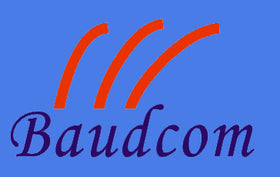Fiber optic cables are quickly becoming the go-to choice for fast, reliable internet and communication systems. They offer high speeds, great performance, and fewer fiber optic network connection issues compared to older copper cables. But while the cables themselves are important, fiber optic connectors—the small parts that link the cables together—also play a big role. These connectors can affect the overall cost and setup of your network.
In this blog, we’ll take a closer look at how Fiber Optic Fast Connector impact the cost of setting up a network and what factors influence their price.
What Are Fiber Optic Fast Connector?
Fiber Optic Fast Connector are used to connect two or more fiber optic cables or link cables to devices like routers, switches, or patch panels. These fiber optic network connection allow data to flow through the network by letting light signals pass from one cable to another. Without them, your network wouldn't work.
There are different types of fiber optic connectors, such as:
- SC (Subscriber Connector): Commonly used for everyday fiber optic network connection.
- LC (Lucent Connector): Smaller, often used in high-density networks.
- MTP/MPO (Multi-fiber Push-on): Used for fiber optic network connection with many fibers at once, often in big data centers.
- ST (Straight Tip): An older type of connector, but still found in some places.
- FC (Ferrule Connector): Known for durability and used in environments with lots of vibration.
The different types of fiber optic connectors you use can impact both the performance and cost of your network.

What Affects the Cost of Fiber Optic Fast Connector?
1. Fiber optic cable connector types
Different types of fiber optic connectors cost different amounts. For example:
- LC connectors are smaller and more suitable for dense networks, so they tend to be a little pricier.
- MTP/MPO connectors, which handle multiple fiber cables at once, cost more because they support faster data transfer and are used in large setups like data centers.
- SC or ST connectors are generally cheaper but might not work well for high-speed, high-demand networks
2. Quality and Material
The materials used to make fiber optic network connection affect their price. High-quality connectors made from durable materials like stainless steel or ceramic tend to cost more but last longer and work better. Cheaper connectors may be made from plastic or lower-grade metals, which can wear out faster and cause performance problems over time.
3. Precision
Some connectors are made with higher precision to ensure better performance, like less signal loss or better light reflection. These connectors are more expensive but are often necessary for high-performance networks where quality is critical.
4. Bulk vs. Individual Purchase
Buying connectors in bulk is often cheaper per unit than buying individual ones. If you're building a large network, purchasing connectors in bulk can save you money. But if you only need a few for a small project, individual connectors will cost more.
How the Cost of Fiber Optic Fast Connector Affects Network Setup
1. Upfront Cost
When setting up a network, the different types of fiber optic connectors and number of connectors you'll need can make a big difference in the overall cost. For small networks, connectors might not cost much. However, for large-scale setups—like in office buildings, universities, or data centers—the cost of connectors can add up quickly.
Besides the cost of the connectors themselves, you also need to factor in the price of equipment and labor to install them. Some connectors are easier to install than others, which can impact both time and costs.
2. Long-Term Maintenance Costs
Although high-quality connectors might cost more at first, they can save money in the long run. Low-quality connectors can wear out faster, leading to more frequent repairs and replacements. If you use higher-quality connectors, your network will likely stay reliable longer, reducing the need for maintenance.
3. Scalability and Upgrades
The different types of fiber optic connectors you choose can also affect how easily you can expand or upgrade your network in the future. Some connectors, like MTP/MPO, can handle many fibers at once, making it easier to expand the network without needing to replace connectors later on. Choosing connectors that are future-proof can save you money and hassle as your network grows.
4. Network Performance
The main job of fiber optic connectors is to ensure data moves quickly and smoothly through the network. Cheap or poorly made connectors can cause signal loss, slowing down your network or even causing disruptions. Spending a little extra on quality connectors can improve your network's speed and reliability, which is especially important for businesses or high-demand applications.

Conclusion
Fiber Optic Fast Connector are small but essential parts of any fiber optic network. While they may seem like a minor detail, fiber optic cable connector types, quality, and cost of connectors can greatly impact your network’s performance and cost—both initially and in the long run. When building or upgrading your network, it’s important to think about more than just the cables and equipment; the connectors you choose will play a key role in how well your network works.
Choosing the right connectors—based on your needs, budget, and future plans—can help you build a faster, more reliable network that won’t require constant repairs or upgrades. While cheaper connectors may seem appealing at first, investing in quality connectors can ultimately save you time, money, and headaches in the future.


